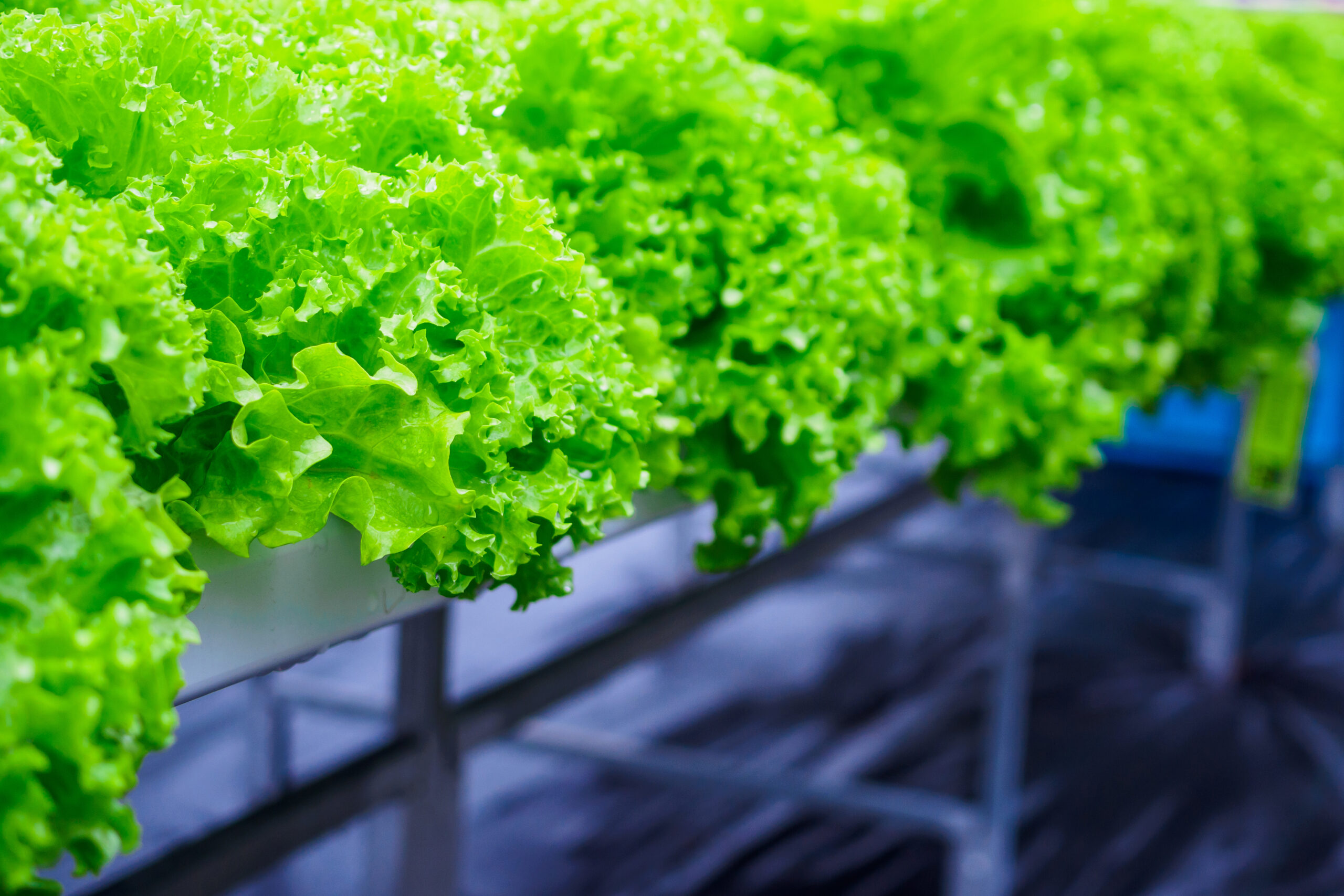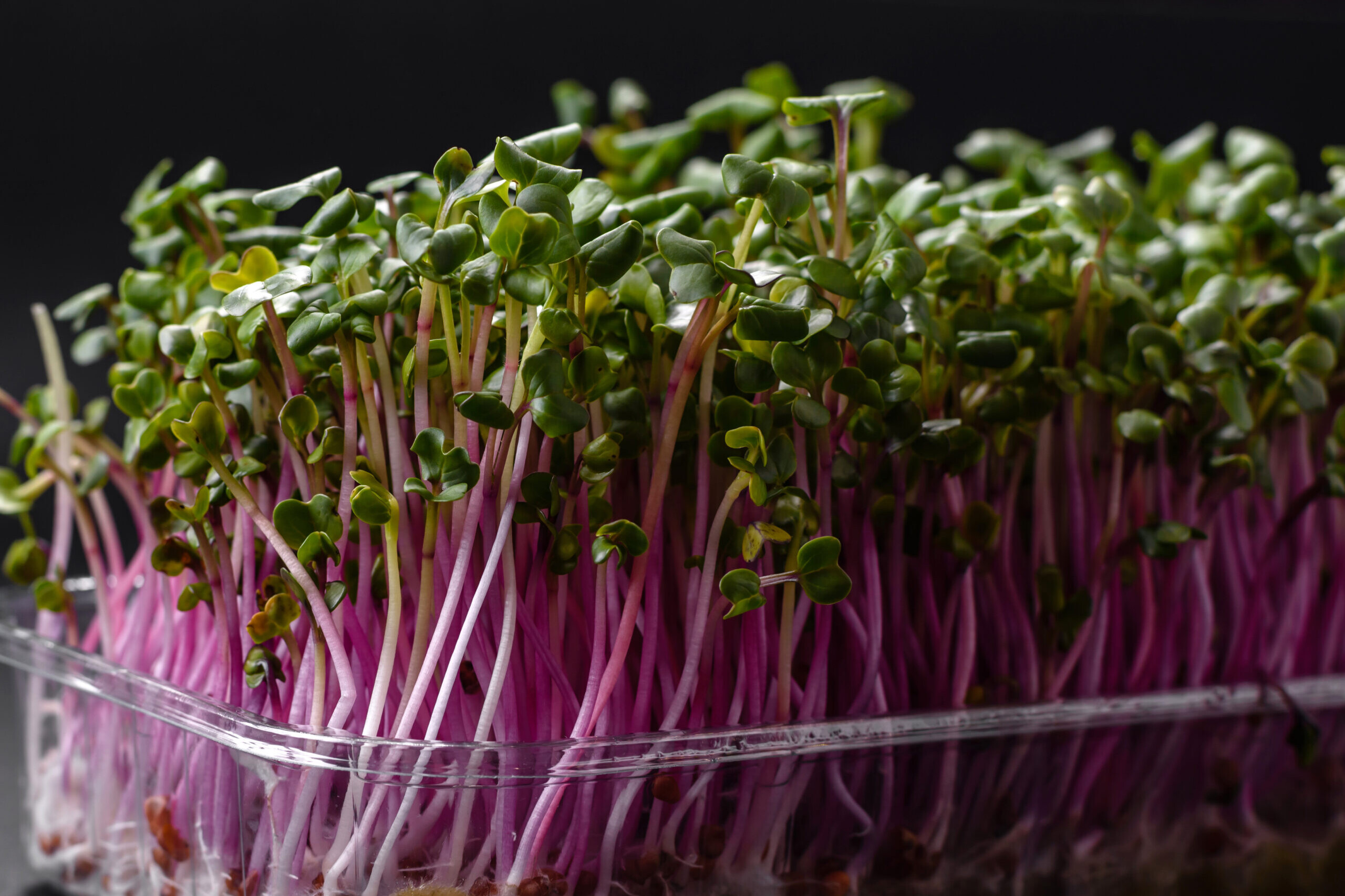INDOOR FARMING CULTIVARS
From nutrient-rich leafy greens to aromatic herbs and vibrant fruits, vertical farms offer a thriving environment for a huge variety of crops. While vertical farming is often associated with growing smaller plants such as herbs, microgreens, and leafy greens, nurseries, for instance, grow larger plants, shrubs, and even give trees a head-start in vertical farms.
Farms with taller growing spaces and more advanced growing systems can accommodate larger plants such as strawberries and dwarf fruit trees, and some vertical farms are even experimenting with growing grains such as wheat, oats, and barley.
Although these plants are typically grown on a larger scale in outdoor fields, the controlled environment of a vertical farm can help mitigate the challenges associated with traditional farming methods such as pests, weeds, and weather-related crop failures as we continue to research, study, and advance vertical farming capabilities to meet the challenges the planet faces.
With the right equipment, vertical farming becomes a compelling and flexible way to cultivate multiple crops in the same space, which can help you meet changing consumer demands with maximized yields.
The range of crops that can be grown in vertical farms is constantly, ahem, growing… Innovations in technology, farming techniques, and even seed development is rapidly evolving for growing in controlled environments. Let’s have a look at some of the most popular crops growing inside…
POPULAR CROPS
One of the most appealing aspects of vertical farming is the ability to grow almost anything. With fit-for-purpose technology, vertical farmers can achieve success not only in high-yield staple crops but also in lower yield specialty crops, offering a diverse range of products that cater to different market demands and price points. Here is a look at some of the most popular crops.
LEAFY GREENS
Leafy greens are always in high-demand due to their nutritional value and versatility in various culinary applications.
Day-to-day Operations: Planting, inspecting, harvesting, sanitation, and packaging.
Challenges: Managing humidity, temperature, and light levels to ensure optimal growth conditions.
Capex: Can be high, particularly for larger-scale operations.
Opex: Ongoing operational costs include electricity, water, nutrients, and labor.
Best-suited Cultivars: Lettuce, kale, spinach, and arugula.


MICROGREENS
Microgreens are gaining popularity for their concentrated flavor, vibrant colors, and nutritional benefits.
Day-to-Day Operations: Planting, inspecting, harvesting, sanitation, and packaging.
Challenges: Short growth cycle can make it difficult to ensure consistent quality, correct issues, and prepare for timely harvest.
Capex: Can be moderate depending on the technology required to meet your offtake needs.
Opex: Ongoing operational costs include electricity, water, nutrients, and labor.
Best-Suited Cultivars: Sunflower, pea shoots, wheatgrass, radish, and many more.
MUSHROOMS
Mushrooms offer unique flavors and textures and have a growing demand in culinary and medicinal industries.
Day-to-day Operations: Inoculation, maintenance, harvesting, sanitation, and packaging.
Challenges: Maintaining consistent temperature, humidity, and sanitation.
Capex: With no need for lighting arrays, can be low to moderate.
Opex: Ongoing operational costs include substrate materials, utilities, and labor.
Best-Suited Cultivars: Oyster, shiitake, lion’s mane, and other gourmet varieties.


MEDICINAL CROPS
Medicinal crops offer significant market demand due to their therapeutic properties and health benefits.
Day-to-day Operations: Cultivating, maintaining, harvesting, and processing medicinal crops for various applications.
Challenges: Ensuring proper cultivation practices and adhering to quality standards for medicinal plants.
Capex: Requirements can vary depending on the scale and complexity of the operation, especially for specialized facilities or large-scale cultivation.
Opex: Ongoing operational costs include utilities, labor, processing, and compliance.
Best-suited Cultivars: Ginseng, echinacea, and tumeric
* Crops suitable for medicinal purposes may vary depending on the region and legal regulations in place. It’s essential to research and comply with the legal requirements and regulations pertaining to the cultivation and sale of medicinal crops in your area.
FODDER LIVESTOCK FEED
Fodder production is crucial for livestock farmers seeking sustainable and cost-effective feed solutions.
Day-to-day Operations: Seed soaking and feeding.
Challenges: Ensuring consistent quality and mixtures with traditional livestock forage.
Capex: Moderate to high, depending on the scale of the operation.
Opex: Ongoing operational costs include seeds, utilities, and labor.
Best-suited Cultivars: Barley, wheat, alfalfa, and other grains and legumes suitable for animal feed.


EXTRACTS
Extracts offer a lucrative opportunity in the agricultural industry, allowing for the extraction, refinement, and packaging of valuable compounds found in various plants.
Day-to-day Operations: The daily operations involve the extraction, refining, and packaging processes to create high-quality extracts.
Challenges: One of the primary challenges is ensuring consistency and potency of the final product, maintaining the desired properties and meeting customer expectations.
Capex: The capital expenditure for extract production can range from moderate to high, depending on the scale of the operation and the equipment required.
Opex: Ongoing operational costs include raw materials, solvents, utilities, labor, and quality control measures.
Best-suited Cultivars: Plants like saffron, ginger, turmeric, and ginseng offer unique compounds that can be extracted for various applications.
RESEARCH AND TRIAL CROPS
Research and trial crops play a crucial role in agricultural innovation, enabling the development of new varieties and cultivation techniques.
Day-to-day Operations: Planting, harvesting, processing, and packaging.
Challenges: Complying with regulations, quality standards, and data logging to ensure accurate and reliable research outcomes.
Capex: The capital expenditure for research and trial crops varies depending on the scale and complexity of the research project.
Opex: Ongoing operational costs include seeds, utilities, labor, and research equipment.
Best-suited Cultivars: Echinacea, saffron, chamomile, and other medicinal herbs and plants that are commonly studied and researched for their unique properties.
* It is important to note that research and trial crops require meticulous planning, attention to detail, and adherence to ethical guidelines to generate meaningful results and contribute to the advancement of agriculture.

WHICH CROP IS RIGHT FOR ME AND MY CUSTOMERS?

It’s crucial to consider the demand, suitability, and profitability of each cultivar. Making connections with buyers for your offtake is an exciting part of the farming experience, and vital for maximizing your farm’s profitability. Building relationships with local markets, restaurants, retailers, and wholesalers can ensure a consistent demand for your harvest.
By starting out with flexible GROW EQUIPMENT, you can align your crop choices with market trends and consumer preferences, setting the foundation for a successful indoor farming business. This enables you to introduce new flavors and crop varieties to meet the demands of your customers while adapting to changing market needs.
But… Where’s a good place to start?
🧑🍳 Local restaurants and cafes: Supply fresh and high-quality produce directly to local eateries, offering chefs and restaurateurs a reliable source of locally grown ingredients grown to taste!
🛒 Grocery stores and supermarkets: Consistent, year-round supply give you a competitive advantage for contracting with grocery retailers looking to offer fresh produce to their customers regardless of season.
🧑🌾 Farmers markets: Participating in farmers markets allows vertical farmers to connect with the local community (!), showcasing your unique and sustainable farming methods while selling freshly harvested crops directly to consumers is a satisfying accomplishment 🥹
📦 Direct-to-Consumer / Online delivery services: With the rise of online grocery shopping, vertical farmers can partner with delivery platforms or set up your own online stores to reach a broader customer base and offer convenient home delivery of your produce.
🍱 Specialty food stores: The cultivation of specialty crops and unique varieties that appeal to health-conscious consumers or those seeking specific ingredients for niche cuisines provides an opportunity for higher-value harvests.
🏫 Institutions and food service providers: Vertical farmers can supply educational institutions, hospitals, corporate cafeterias, and other large-scale food service providers, meeting their demand for fresh, sustainable, and locally sourced produce.
Farming Agility.
Following market trends and consumer demand requires flexible agtech. Avoid getting pigeonholed by the wrong equipment – talk to us today!